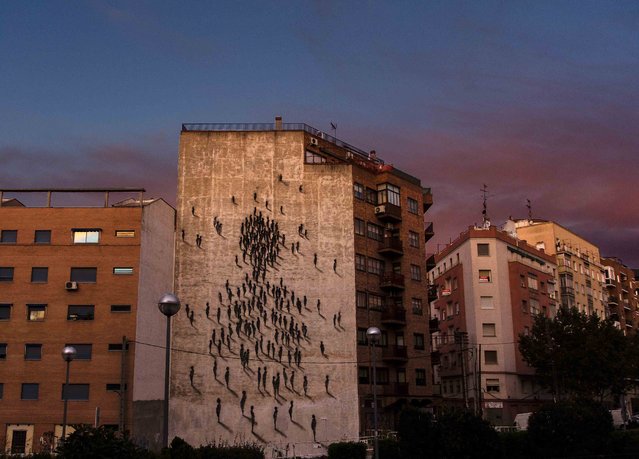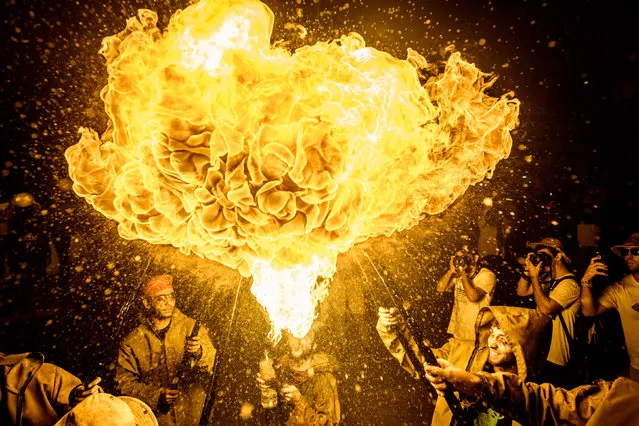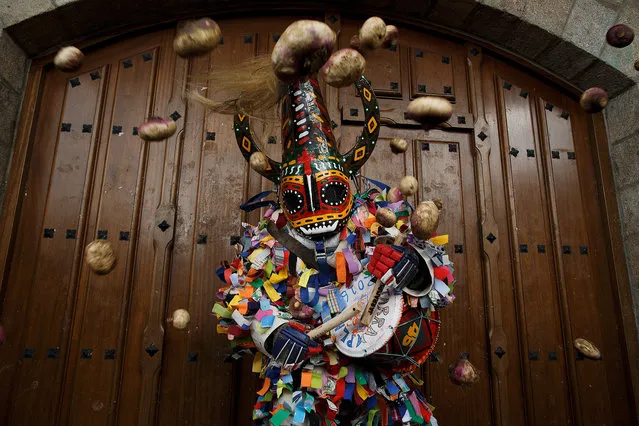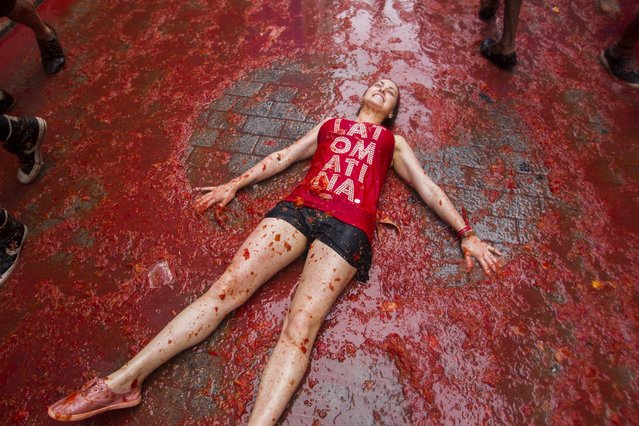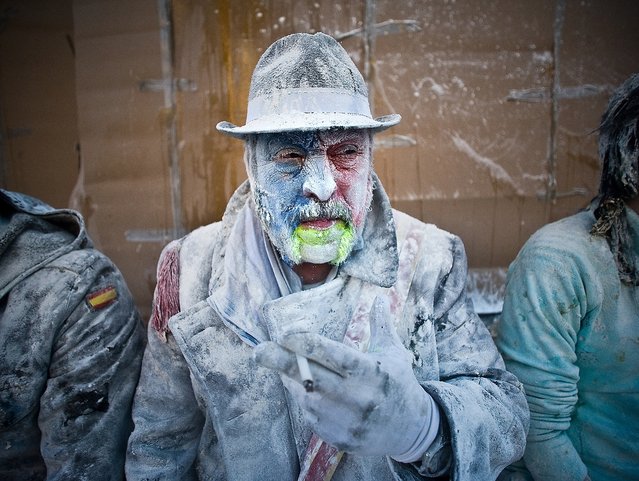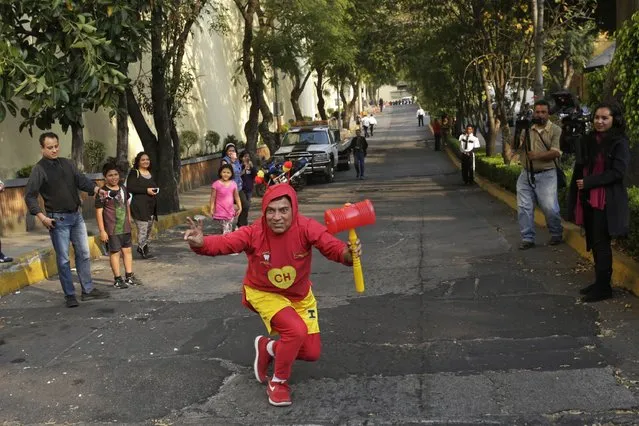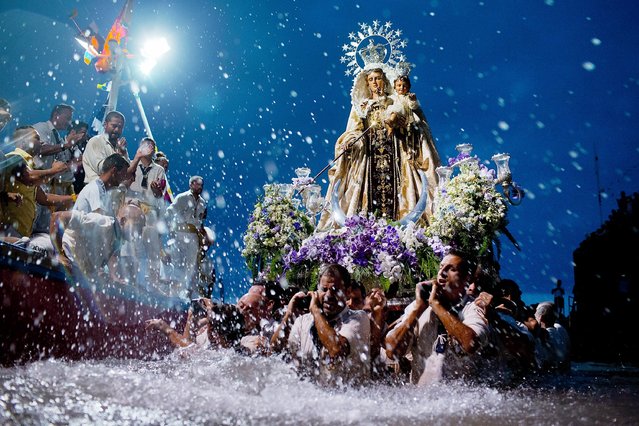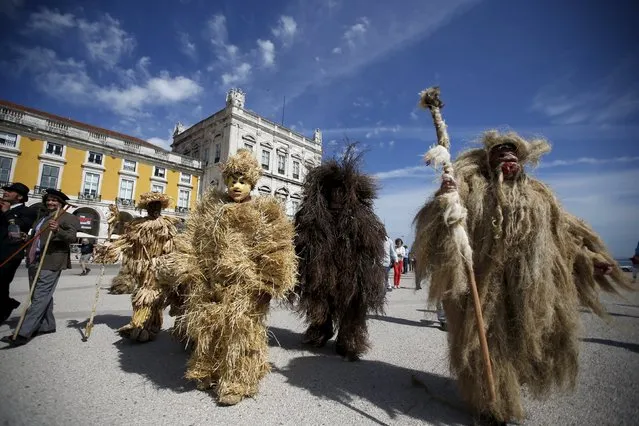
A member of the “Los Danzantes y Los Boteiros” folk group performs during the parade of the 10th International Festival of the Iberian Mask in Lisbon, Portugal May 9, 2015. The festival runs until next Sunday and about 690 masked people from Spain and Portugal are participating, according to organizers. (Photo by Rafael Marchante/Reuters)
10 May 2015 10:43:00,post received
0 comments

